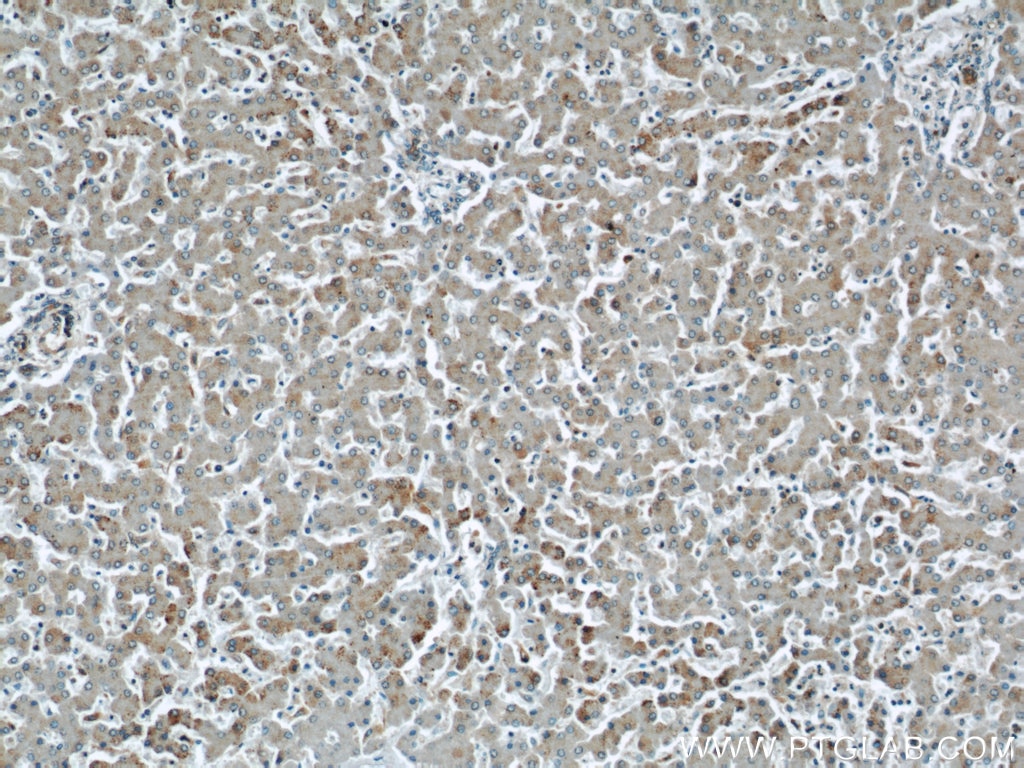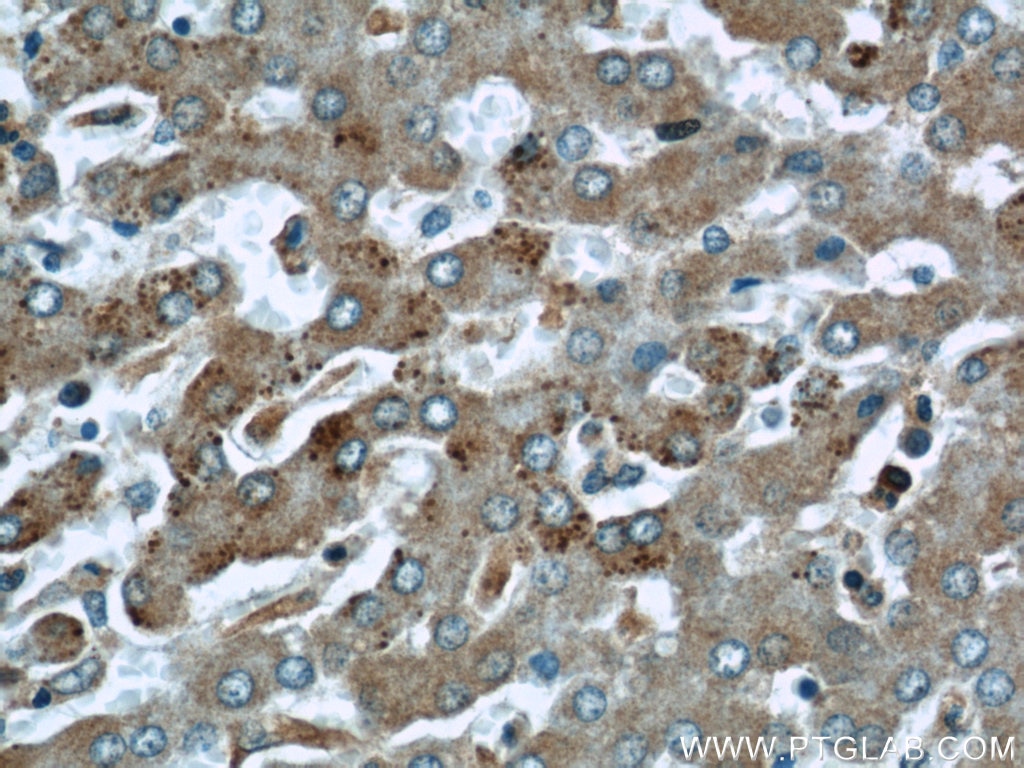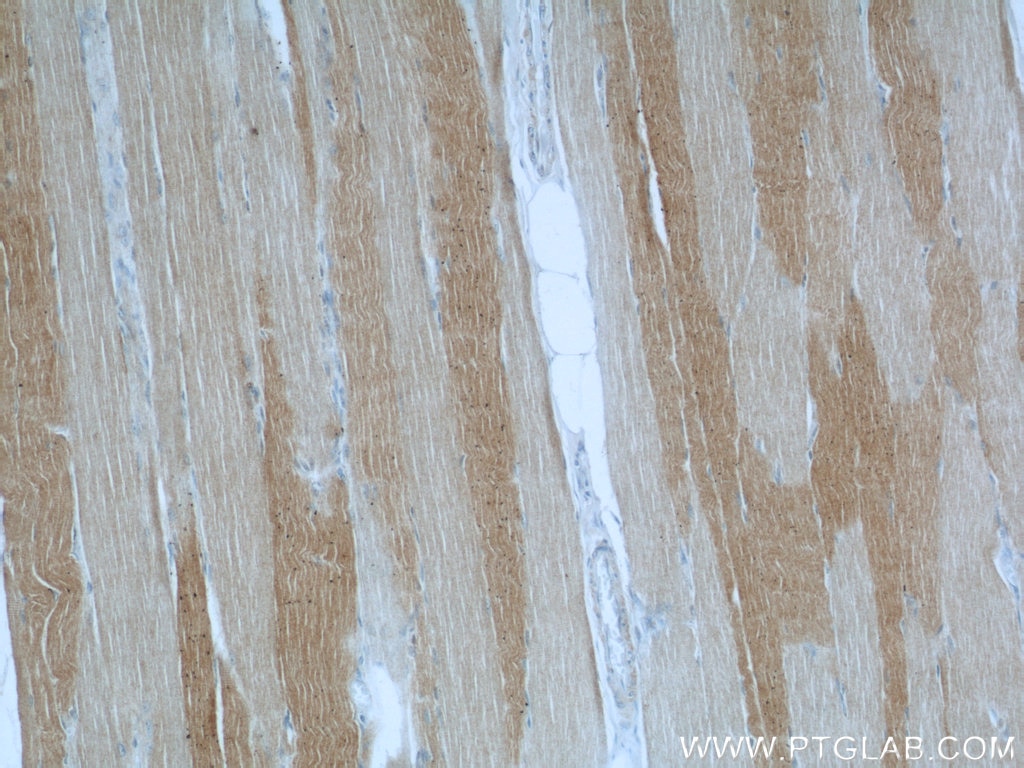Tested Applications
| Positive WB detected in | A431 cells, A549 cells, HCT 116 cells, HeLa cells, HepG2 cells, LNCaP cells, NIH/3T3 cells |
| Positive IP detected in | Jurkat cells |
| Positive IHC detected in | human colon tissue, human kidney tissue, human liver tissue, human skeletal muscle tissue Note: suggested antigen retrieval with TE buffer pH 9.0; (*) Alternatively, antigen retrieval may be performed with citrate buffer pH 6.0 |
| Positive IF/ICC detected in | MCF-7 cells |
Recommended dilution
| Application | Dilution |
|---|---|
| Western Blot (WB) | WB : 1:1000-1:6000 |
| Immunoprecipitation (IP) | IP : 0.5-4.0 ug for 1.0-3.0 mg of total protein lysate |
| Immunohistochemistry (IHC) | IHC : 1:500-1:2000 |
| Immunofluorescence (IF)/ICC | IF/ICC : 1:200-1:800 |
| It is recommended that this reagent should be titrated in each testing system to obtain optimal results. | |
| Sample-dependent, Check data in validation data gallery. | |
Published Applications
| KD/KO | See 1 publications below |
| WB | See 26 publications below |
| IF | See 3 publications below |
| IP | See 3 publications below |
| CoIP | See 2 publications below |
Product Information
12201-1-AP targets ABHD5 in WB, IHC, IF/ICC, IP, CoIP, ELISA applications and shows reactivity with human, mouse samples.
| Tested Reactivity | human, mouse |
| Cited Reactivity | human, mouse, pig |
| Host / Isotype | Rabbit / IgG |
| Class | Polyclonal |
| Type | Antibody |
| Immunogen | ABHD5 fusion protein Ag2840 Predict reactive species |
| Full Name | abhydrolase domain containing 5 |
| Calculated Molecular Weight | 349 aa, 39 kDa |
| Observed Molecular Weight | 39 kDa |
| GenBank Accession Number | BC021958 |
| Gene Symbol | ABHD5 |
| Gene ID (NCBI) | 51099 |
| RRID | AB_2220710 |
| Conjugate | Unconjugated |
| Form | Liquid |
| Purification Method | Antigen affinity purification |
| UNIPROT ID | Q8WTS1 |
| Storage Buffer | PBS with 0.02% sodium azide and 50% glycerol , pH 7.3 |
| Storage Conditions | Store at -20°C. Stable for one year after shipment. Aliquoting is unnecessary for -20oC storage. 20ul sizes contain 0.1% BSA. |
Background Information
ABHD5, also named as NCIE2 and CGI-58, belongs to the peptidase S33 family. ABHD4/ABHD5 subfamily. It is a Lysophosphatidic acid acyltransferase which functions in phosphatidic acid biosynthesis. ABHD5 may regulate the cellular storage of triacylglycerol through activation of the phospholipase PNPLA2. It is involved in keratinocyte differentiation. ABHD5 is an evolutionarily conserved protein that acts as a potent activator of Atgl. Abhd5 is expressed in several tissues that lack Plin , raising the possibility that this co-activator might interact with additional PAT proteins. Abhd5 and Mldp are highly colocalized on individual lipid droplets.(PMID:19064991) Defects in ABHD5 are the cause of Chanarin-Dorfman syndrome (CDS).
Protocols
| Product Specific Protocols | |
|---|---|
| WB protocol for ABHD5 antibody 12201-1-AP | Download protocol |
| IHC protocol for ABHD5 antibody 12201-1-AP | Download protocol |
| IF protocol for ABHD5 antibody 12201-1-AP | Download protocol |
| IP protocol for ABHD5 antibody 12201-1-AP | Download protocol |
| Standard Protocols | |
|---|---|
| Click here to view our Standard Protocols |
Publications
| Species | Application | Title |
|---|---|---|
Nat Commun PNPLA3 is a triglyceride lipase that mobilizes polyunsaturated fatty acids to facilitate hepatic secretion of large-sized very low-density lipoprotein | ||
Nat Commun O-GlcNAc transferase inhibits visceral fat lipolysis and promotes diet-induced obesity. | ||
Cell Death Differ Plin2-mediated lipid droplet mobilization accelerates exit from pluripotency by lipidomic remodeling and histone acetylation. | ||
Proc Natl Acad Sci U S A Spatial regulation of UBXD8 and p97/VCP controls ATGL-mediated lipid droplet turnover. | ||
Proc Natl Acad Sci U S A Perilipins 2 and 3 lack a carboxy-terminal domain present in perilipin 1 involved in sequestering ABHD5 and suppressing basal lipolysis. | ||
J Cell Biol ORP5 localizes to ER-lipid droplet contacts and regulates the level of PI(4)P on lipid droplets. |































